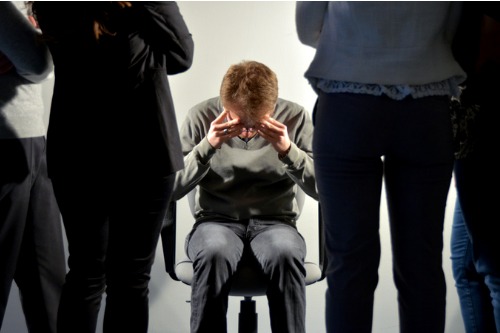
Very few teachers will tell you that they go into the job for the money. Teaching is a student-focused role, aimed at bringing the best out in children and equipping them for a happy and successful life.
This is part of the reason why reports of teachers leaving the profession due to incessant bullying, intimidation and violence are so upsetting.
To better understand this worrying trend, researchers from La Trobe University conducted a month-long social media survey of 560 teachers across Australia last year.
The researchers – Paulina Billett, a lecturer of Sociology, Edgar Burns, a senior lecturer of Sociology and Rochelle Fogelgarn, a lecturer in teacher education – found that more than 70% of participants were bullied or harassed by a student in the preceding 12 months.
Verbal aggression (30%) was the most common form of bullying, followed by physical abuse (10%) and damage to personal property (12.5%) and students standing over them or invade their personal space (16.6%).
Female teachers experienced student bullying and harassment slightly more often than males – 71% to 68.4% – and were more likely to experience students standing over them or invading their personal space (9.9% to 6.9%). Students were also more likely to harass them through phone calls or text messages (2.3% to 1.4%).
Male teachers, on the other hand, were more likely to have students organise others against them (8.3% and 6% respectively), lie about them to get them in trouble (7.6% to 6.4%), be discriminated against by students (5.5% to 2.5%) and have parents engaged to argue on a student’s behalf (11% to 9.4%).
Nearly 60% of teachers reported experiencing at least one incident of bullying and harassment by parents in the last 12 months. The most common were parents verbally disparaging a teacher (15.2%), yelling (14.4%) and arguing on their child’s behalf (13.4%).
Female teachers bore the brunt of parental abuse (nearly 60%, compared to 41% for male teachers).
Physical attacks by parents on teachers were rare, with 8.8% reporting a parent standing over or invading their personal space and just 1.1% being hit or punched by a parent.
In an article recently published in The Conversation, the researchers said the findings show that bullying and harassment have a considerable impact on teachers.
“Respondents in our survey reported severe repercussions for their mental health and well-being,” they said.
“A number of teachers said they were suffering symptoms of anxiety, depression and PTSD, including panic attacks and uncontrollable shaking.”
The researchers added that around 83% of respondents who were interviewed disclosed a desire to leave the profession due to teacher-targeted student and parental bullying.
“A male teacher who had been in the profession for nearly 15 years told us: ‘I could deal with it if there was any form of support […] Teachers have no rights anymore and all we can realistically do is tell students they have detention or call their parents. Students don’t come to detention, then what!’”
What can be done?
The researchers said that bullying occurs in the context of a power imbalance.
“Teachers are understood to occupy a position of power over their students, which obscures the prevalence of teacher-targeted bullying in and out the classroom,” the researchers said.
“There was a feeling among respondents that student behaviour was contextualised in terms of teachers’ ability [or inability] to manage complicated situations.”
One teacher told the researchers: “I worry about grades on report cards and how parents will react. They no longer accept it, but instead try to influence and intimidate teachers to change the grades based on what they believe their child deserves.”
Teachers also expressed dismay at their inability to create real and lasting change to bullying behaviour.
“Initial findings from our study call for more support by management and peak organisations for teachers who report even minor incidents,” the researchers said.
“Respondents suggested a code of conduct be created in schools. This would include a zero-tolerance policy and clear guidelines spelling out which behaviours are considered to be bullying and harassment.”
The respondents also suggested students and parents face penalties for breaching the code of conduct.
“Teachers also called for stronger measures, such as the ability to expel students or ban parents from contacting teachers, to prevent aggressors from stepping back into classrooms or school grounds,” the researchers said.


